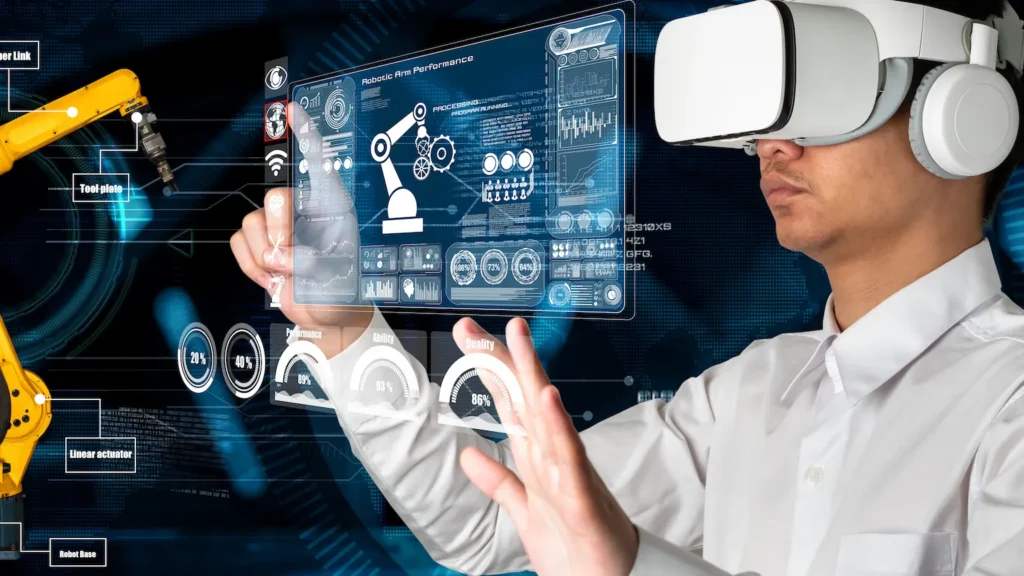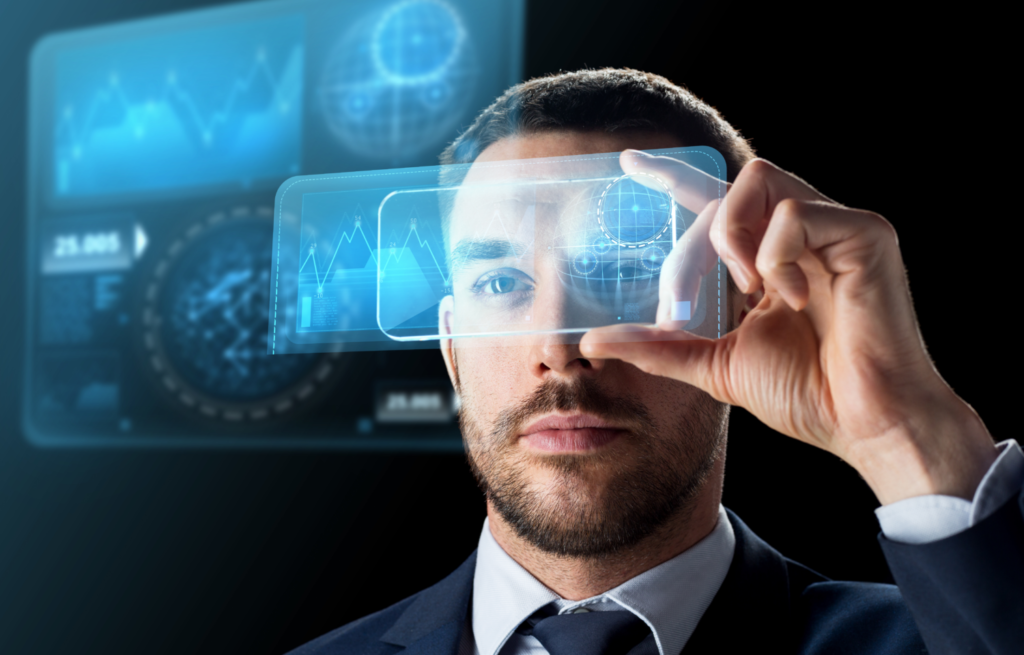Table of Contents
Introduction: The Rise of Augmented Reality in Branding
In today’s digital-first era, brands are constantly seeking new ways to connect with consumers in immersive, memorable ways. Augmented Reality (AR) has emerged as a powerful tool that blends digital content with the real world — revolutionizing branding strategies across industries. From beauty and fashion to automotive and retail, AR enables businesses to deliver unique brand experiences that engage customers, personalize interactions, and ultimately, drive conversions.
In this blog, we’ll explore how brands can leverage AR to elevate their campaigns, along with real-world examples, benefits, strategies, and future possibilities.

1. What Is Augmented Reality (AR)?
Augmented Reality overlays digital elements—like visuals, sounds, and effects—onto the physical world through devices such as smartphones, tablets, or AR glasses. Unlike Virtual Reality (VR), which creates a fully digital environment, AR enhances the existing real-world setting.
Key AR technologies used in branding:
- Marker-based AR (QR codes, image targets)
- Markerless AR (GPS or device-based)
- Projection-based AR
- Superimposition-based AR (used in facial filters, product overlays)
2. Why Brands Are Embracing AR
AR branding isn’t just trendy—it’s effective. Here’s why brands are investing in AR:
- Enhanced Customer Engagement: AR experiences are interactive and memorable, keeping users engaged longer.
- Personalized Experiences: Consumers can try products virtually (e.g., makeup, eyewear, furniture), increasing purchase confidence.
- Social Media Buzz: AR filters and lenses on Instagram, Snapchat, or TikTok drive user-generated content and virality.
- Higher Conversion Rates: Virtual try-ons lead to fewer returns and more confident purchases.
- Differentiation: AR sets innovative brands apart from competitors still relying on traditional media.
3. Examples of Successful AR Branding Campaigns
Let’s explore how leading brands have integrated AR into their branding efforts:
a. IKEA Place
IKEA’s app allows users to virtually place furniture in their home using AR. This not only enhances product visualization but also drives purchase decisions.
b. Sephora Virtual Artist
Using facial recognition, Sephora’s AR tool lets users try on makeup in real time, leading to higher online engagement and sales.
c. Pepsi Max – AR Bus Shelter
Pepsi’s viral campaign transformed a London bus shelter window into a live AR experience with alien invasions and robot attacks—making it one of the most talked-about stunts in outdoor advertising.
d. Nike – AR Shoe Try-On
Nike enabled customers to scan their feet using their app and get a perfect shoe size match, enhancing personalization and reducing returns.
e. Gucci – Snapchat AR Lens
Gucci used Snapchat’s AR try-on lenses to let users experience how their shoes look on them virtually, increasing traffic to their eCommerce site.

4. How to Build a Successful AR Branding Campaign
a. Define Your Goal Clearly
Whether it’s product visualization, storytelling, or experiential marketing—clarify the intent.
b. Know Your Audience
Younger generations, especially Gen Z, are highly responsive to AR and tech-led experiences. Design campaigns tailored to their habits and platforms.
c. Choose the Right AR Platform
Options include:
- Social media AR tools (e.g., Instagram, TikTok, Snapchat filters)
- Mobile apps (branded AR experiences)
- Web-based AR (no app downloads needed)
d. Ensure User-Friendliness
Keep interactions simple and intuitive. The fewer the clicks, the better the engagement.
e. Promote the AR Experience
Integrate your AR campaign across digital channels:
- Social media promotion
- Influencer partnerships
- In-store AR triggers (like QR codes)
- Email and website CTAs
f. Use AR Analytics
Measure success via data like:
- Time spent using AR
- Interaction rate
- Shareability
- Conversion metrics

5. Types of AR Applications for Branding
| Type of AR Use | Branding Benefit | Example |
|---|---|---|
| Virtual Try-Ons | Increase buyer confidence | Lenskart, Sephora |
| Interactive Packaging | Make packaging come alive | 19 Crimes wine AR labels |
| AR Filters/Lenses | Social media virality & user engagement | Gucci, Adidas on Snapchat |
| Gamified AR Ads | Boost engagement through fun & interaction | Burger King’s AR treasure hunt |
| Location-Based AR | Drive foot traffic & local discovery | Pokémon Go brand tie-ins |
6. Tools and Platforms to Create AR Campaigns
- Spark AR Studio (for Instagram and Facebook filters)
- Snap Lens Studio (for Snapchat lenses)
- 8thWall (web-based AR)
- Zappar and Blippar (custom branded AR solutions)
- Unity + Vuforia (advanced AR development)
These tools offer drag-and-drop interfaces for marketers, while also supporting complex coding for developers.
7. Integrating AR Into Omnichannel Strategy
AR shouldn’t exist in isolation. When integrated into your full branding and marketing strategy, it amplifies results.
- Add AR experiences to email marketing with QR codes
- Sync AR with influencer campaigns
- Use AR for in-store experiences and live events
- Integrate AR reviews or demos on product pages
- Use AR data insights to personalize future campaigns
8. Challenges and How to Overcome Them
| Challenge | Solution |
|---|---|
| High development cost | Start with social AR filters (low cost) |
| Device or software limitations | Use webAR or cross-platform tech |
| User privacy concerns | Be transparent and comply with data laws |
| Low adoption by older demographics | Use AR for education, tutorials, or loyalty rewards |
9. Future of AR in Branding
The future of branding will be immersive, and AR is just the beginning:
- AR + AI Personalization: Real-time product recommendations through AR.
- AR Glasses: With devices like Apple Vision Pro and Meta’s Ray-Ban glasses, AR will become more integrated into daily life.
- 5G Connectivity: Faster, seamless AR experiences.
- Metaverse Integration: AR will bridge the gap between real-world and virtual brand experiences.
- NFTs and AR Collectibles: Combining exclusivity and interactivity for fans.
Basics of Augmented Reality – GeeksforGeeks
Conclusion: Why AR Should Be a Key Part of Your Branding Strategy
Augmented Reality is no longer a futuristic gimmick—it’s a powerful tool redefining the boundaries of brand interaction. In a digital-first world where consumer attention is both precious and fleeting, AR offers brands a rare opportunity: to captivate, engage, and immerse audiences like never before. Whether it’s allowing customers to try on products virtually, explore immersive brand stories, or engage with interactive billboards, AR creates memorable experiences that traditional media simply can’t match.
Moreover, AR doesn’t just entertain—it informs, personalizes, and empowers customers to make more confident purchase decisions. As AR technology becomes more accessible through smartphones and wearables, its integration into branding campaigns will soon shift from a novelty to a strategic necessity.
However, success with AR requires more than flashy visuals. Brands must focus on user experience, accessibility, and genuine value addition. The key is to ensure that AR aligns with your brand identity and serves a clear purpose—whether it’s enhancing customer service, driving engagement, or increasing conversion rates.
Forward-thinking brands like IKEA, Sephora, and Nike have already shown what’s possible. Now it’s your turn. By incorporating AR thoughtfully and creatively, your brand can stand out, stay relevant, and build lasting emotional connections in an increasingly competitive marketplace.
The future of branding lies not just in visibility—but in interactivity. And AR is your gateway to that future.
Krishna bansal% – Content writer
FAQs: Augmented Reality in Branding
Q1. Is AR expensive to implement for small businesses?
Not necessarily. Many tools like Spark AR and Snap Lens Studio offer free versions for basic filters.
Q2. Do AR campaigns need a dedicated app?
No. WebAR and social filters allow brands to launch AR without building an app.
Q3. Can AR be used offline?
While some features require internet access, many AR apps can function with preloaded content in low-connectivity areas.
Q4. What industries benefit most from AR branding?
Fashion, retail, cosmetics, real estate, automotive, FMCG, education, and even B2B sectors are using AR effectively.
Q5. How long does it take to launch an AR campaign?
Basic AR filters can be ready in a few days. Custom interactive campaigns may take weeks, depending on complexity.
